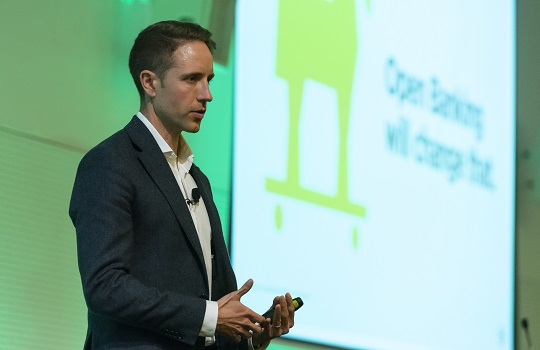
Australian banks are failing to utilise their in-house analytics capabilities, effectively relinquishing a “massive profit uplift” that could be gained through their data teams, according to Jonas Christensen, Head of Analytics, ME.
Speaking at FST’s Future of Financial Services conference in Melbourne, Christensen stressed that as service personalisation becomes central to modern banking – echoing the individualised service offerings of big tech leaders, including Netflix and Uber – so too will data analytics become critical to banks’ customer-focused objectives, and, moreover, the defining “competitive advantage” for FSIs.
Yet, not one bank has “nailed” their personalisation and customer engagement objectives, according to Christensen.
Paradoxically, while banks are likely to have “more information on our customers than many big tech companies have”, the chronic misuse of analytics teams has meant that they “haven’t really nailed the usage of that [data],” he said.
Christensen therefore urges FSIs to incorporate data analysis into their broader strategic mission, embedding analytics teams deep into end-to-end processes. Effectively, this means “elevating” analytics from small-scale tasks to company-wide projects that makes better use of banks’ enormous data stocks.
“You’ve got to elevate… your analytics teams into full end-to-end delivery processes, so they actually feel like they’re delivering real massive value to the organisation,” he said.
This strategic “elevation” could also have a direct impact on banks’ bottom line. Citing the annual analytics impact survey by the Melbourne Business School and A.T. Kearney, Christensen said ‘analytics laggards’ that move to become ‘analytics leaders’ could see a 60 per cent uplift in profits.
Christensen drew parallels between the open data revolution of today and the IT revolution of the 1990s, where banks readily incorporated and embedded technology within the centre of business operations – mostly at the behest of forward-thinking CIOs. He urged today’s CIOs to likewise prioritise the work of analytics and data processing teams to help prepare banks for the data demands of the forthcoming open banking regime.
“Open banking and open data is going to transform the way we do things; therefore, you need CIOs to lift [analytics] to a strategic level,” he said.
“You’ve got to get buy-in right from the CEO down,” he said. “You can’t expect your analytics teams to deliver all this by themselves.”
He encourages IT and analytics teams to work together to facilitate innovation and to deliver new and engaging customer experiences, leveraging the next generation of intuitive and automated technologies.
“Remember, [analytics is] like IT now – it’s like the IT revolution but with data. We’ve got to treat them in the same way, and they’ve got to have the same habits,” he said.
“What we’re really trying to do [in banking] is to take the customer experience back to the where day there was the intimate and personal and to create that today in a digital format. To do that, you need machine learning, AI, and analytics to execute that.”
The key pillars for building a successful analytics organisation
For Christensen, banks face significant structural challenges that hamper their capacity to innovate from their vast data resources.
Beyond the more obvious legacy technology and processing constraints that “continue to make it hard for incumbents to leapfrog [their] competition”, as well as a stifling regulatory environment that “favours compliance over experimentation”, banks’ traditionally “closed-loop system” for data is impeding their innovation potential, he argues.
“The data and information that gets created within a bank stays within the bank,” he said.
To fully take advantage of analytics processes and, indeed, prepare banks for an open banking economy, companies should seek to readily embrace third-party data sharing.
“An API linked to internal and external processes means that data can flow in and out information, but also that innovation can come in and out from third parties and can link up into a networked economy that makes everyone better off: the company, the third parties, and the customers.”
For this, Christensen argues, banks need a flexible architecture, backed by cloud infrastructure, to push data around the organisation. This will enable real-time processing that customers increasingly expect from their touch points.
Further, analytics teams must be allowed to refocus their priorities and not get distracted by the day-to-day grind of business. Too often, Christensen frets, analytics is taken off task by being called upon for menial activities that contribute little to wider business objectives.
“What often happens, and what I spend most of my day saying ‘no’ to is this sort of stuff like ‘my spreadsheet’s broken, can you help me with this macro?’ I don’t know how to fix this up.”
“We don’t want them to be dragged down by everyone else’s priorities. They’ve got to work on only the most important stuff,” he said.
In order for analytics teams to prioritise work effectively, Christensen encourages “an agile project” framework supported by business-savvy and decisive leadership.
“You’ve got to have strong leadership and you’ve got to have business acumen and an understanding of customer experience,” he said.
Talent is the wellspring of innovation within analytics – yet Australia’s shallow talent pool may be limiting local banks’ analytics capabilities, Christensen fears.
“You’ve got to look for talent internationally,” he said. “Australia is not very big, and we’re also a little bit behind the US and some European countries in the way that we use analytics. We’ve got to be able to look outside the country for talent to get the best.”
While financial services should expect their data boffins to be experts in “coding, data warehousing, and statistics”, Christensen believes it is just as crucial for them to have business nous and evolved interpersonal skills “to be able to communicate their findings to the business.”
For Christensen, however, while analytics talent is crucial to supporting an innovative business environment, even the best data scientists can do little to overcome cultural constraints within an organisation.
Ultimately, it is up to the business to “create an environment that is conducive to these data scientists actually executing on the stuff that they find”.





